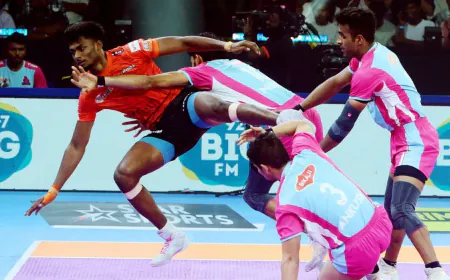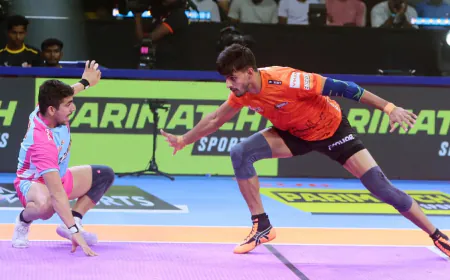New Zealand Maintains Lead as India Shows Resilience in Test Match
India managed to score at a brisk pace of 4.71 runs per over during the 49 overs they batted, reducing their substantial first-innings deficit from 356 runs to just 125. With seven wickets in hand and two days of play remaining, India's prospects have improved significantly. However, New Zealand still held the advantage, especially after dismissing Virat Kohli for 70 runs on the last ball of the day.

The third day of the inaugural Test between India and New Zealand in Bengaluru was filled with excitement as a total of 453 runs were scored, and 10 wickets fell. By day’s end, New Zealand remained in a strong position, but India showcased an impressive and aggressive response in their second innings.
India managed to score at a brisk pace of 4.71 runs per over during the 49 overs they batted, reducing their substantial first-innings deficit from 356 runs to just 125. With seven wickets in hand and two days of play remaining, India's prospects have improved significantly. However, New Zealand still held the advantage, especially after dismissing Virat Kohli for 70 runs on the last ball of the day.
Rohit Sharma provided a solid start for India with a quickfire 52 off 63 balls, helping to establish a 72-run opening partnership with Yashasvi Jaiswal, who contributed 35 runs. Jaiswal, however, was not at his best and eventually fell to Ajaz Patel's left-arm spin in an attempt to force a favorable matchup. This unexpected breakthrough led to a strange dismissal for Rohit, who was batting confidently but got a bottom-edge that rolled onto the stumps in a bizarre manner, leaving him bewildered. This double strike revitalized New Zealand’s momentum as they sought to claim more wickets.
Despite the setbacks, India maintained an aggressive mindset, particularly through Sarfaraz Khan, who came in swinging. He targeted the spinners aggressively, especially Ajaz Patel, and played a series of inventive shots, including slog sweeps and upper-cuts that showcased his intent. Kohli also played with confidence against the spinners, and together, they built a formidable partnership of 136 runs at a rapid pace. Both seemed poised to end the day together, but a missed opportunity for Kohli, created by Glenn Phillips and dropped by Ajaz at first slip, would come back to haunt India. Eventually, Kohli fell to a catch off Ajaz, leaving New Zealand to end the day on a positive note.
While India’s aggressive batting was commendable, the day primarily belonged to Rachin Ravindra, who scored a stellar 134 runs. His second Test century played a pivotal role in New Zealand's substantial first-innings total. Continuing from his strong performance in Sri Lanka, Ravindra showed remarkable composure against both spin and pace, effectively countering Indian bowlers. Despite losing wickets at the other end, he and Tim Southee, who contributed 65 runs, successfully thwarted India's attempts to wrap up New Zealand's innings early on the third day. Jasprit Bumrah, Mohammed Siraj, and Ravindra Jadeja bowled with determination in the morning session, but once the Ravindra-Southee partnership gained momentum, India struggled to contain the run flow.
Ravindra's innings was notable for its lack of chances; India’s only real opportunity to dismiss him came when he was on 110 runs. An LBW appeal off Kuldeep Yadav was not reviewed by India, allowing Ravindra to accumulate another 24 runs. New Zealand managed to pile on an additional 169 runs with their last three wickets, which deepened India's first-innings deficit to a daunting 356 runs. Nevertheless, India fought back strongly in their second innings, and while they would have preferred to have Kohli see out the day, the stage is set for a thrilling fourth day of play.
Summary of Scores:
- India: 46 & 231/3 (Sarfaraz Khan 70*, Virat Kohli 70, Rohit Sharma 52; Ajaz Patel 2-70)
- New Zealand: 402 (Rachin Ravindra 134, Devon Conway 91; Ravindra Jadeja 3-72)
- India trails by 125 runs.
As the match progresses, the tension and excitement are building, setting the scene for a potentially electrifying conclusion to the Test.





















































